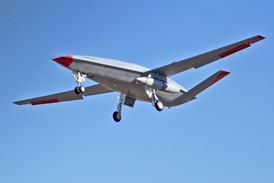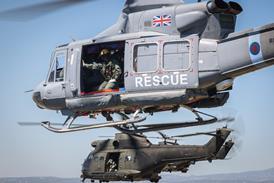Guy Norris/LOS ANGELES
THE US Air Force favours the "baseline" McDonnell Douglas (MDC) C-17 Globemaster III rather than a stretched derivative as its new-build option to replace the Lockheed Martin C-5A/B Galaxy, according to the US manufacturer.
MDC claims that the USAF is interested in using the basic C-17 transport rather than a stretched version as a long-term replacement for the Galaxy.
The USAF's Air Mobility Command (AMC) plans to start replacing its surviving 76-strong fleet of C-5s in 2006.
"The USAF has not expressed any interest in a stretch version, which we have said is possible. The USAF has said to us, 'Why would you want to do that? The C-17 can carry now virtually everything the C-5 can'," says the company.
MDC "-has plans on the drawing board", for various stretched C-17s with fuselage plugs ranging from 3.6m to just over 12m long. Studies have indicated that a C-17 stretched by up to 6.1m could still have its current austere field performance.
A larger fuselage plug would require a longer take-off length and a wider runway (for turning and reversing) and possibly new powerplants in the 200-222kN (45,000-50,000lb)-thrust range.
One possible reason for the USAF's lukewarm interest in a larger C-17 is uncertainty over powerplants. The only suitable new-generation engine under serious study in this size category is the General Electric engine for the stretched Airbus A340-600.
The thrust regime for this engine also appears to have increased from 225kN to 245kN, taking it well beyond the stretched C-17, even when derated (Flight International, 11-17 September).
"A stretch is very 'do-able'," says MDC, "-but the USAF currently believes the benefits of having two versions would outweigh the logistics advantages of a larger fleet of one type."
Source: Flight International
















